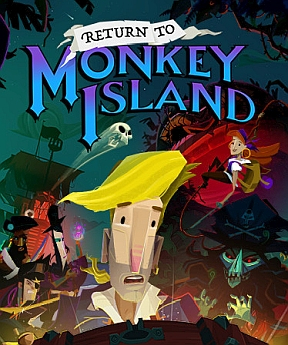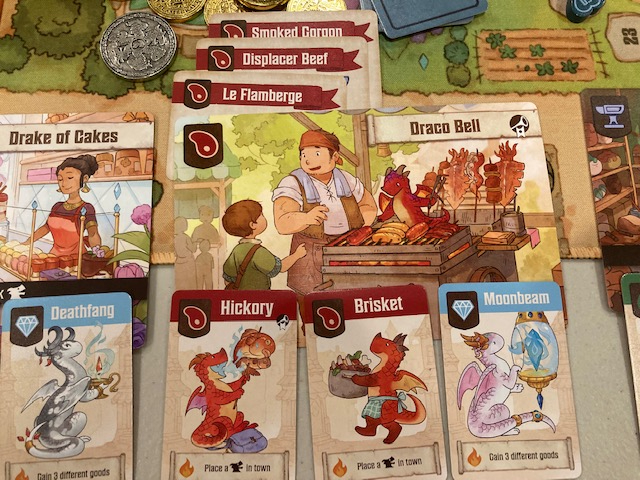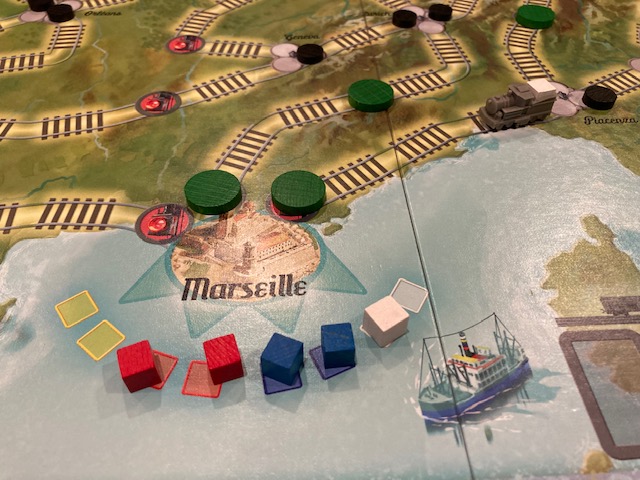About a week ago, on September 19th 2022, the final game in the Monkey Island series (Return to Monkey Island) was published on Nintendo Switch and Steam. The Monkey Island series is a a bunch of point-and-click adventure video games starting with The Secret of Monkey Island. To my mind, the original game, The Secret of Monkey Island, is one of the greatest video games ever made, and the other five in the series are just as good (well, mostly). The games are funny, they have interesting puzzles, they are well-crafted, and they are well-written.
To be clear: these are not lot a lot of games like these in the current marketplace: there’s no “shoot-em-up”, there’s no “online multiplayer”, there’s no “do stuff in realtime” (mostly). These are adventures where you go explore your own pace solving puzzles in the islands of the carribbean. There’s a story.

I make the bold claim that the original Secret of Monkey Island (see above) is so thoughtful and tightly crafted, I would say it approaches the status of literature, telling an amazing acompelling story regardless of what Steve Jobs thinks: See Ron Gilbert’s post on meeting Steve Jobs here.

We have frequently discussed Monkey Island here: it was exciting when Monkey Island I and II were ported to iOS (that’s good), but depressing when Disney let the app lapse on new releases of the operating system (that’s bad). We did find that GOG (Good Old Games) had made the first 4 games available. That’s good! Ron GIlbert had even famously texted Disney to sell him the rights to Monkey Island so he could make a new game. They didn’t “seem” to respond (that’s bad), but after his initial contact, we see that Ron Gilbert and Dave Grosssman have teamed up once again and “somehow” gotten the rights to make the final chapter of the Monkey Island saga. That’s good! That’s where we finally find … the secret of Monkey Island in Return To Monkey Island.
Quick Review
If you liked any of the Monkey Island games, you will like this one. It has all the qualities of the original games: funny, well-crafted puzzles, and a sense of exploration. I wish they had stayed with the art style from Monkey Island 3 (with the animated style), but I mostly like the new art style here: see below.

My only complaint was that the right stick (I played on Switch) was always supposed to move around to “hot spots” on the screen, but if you sat for even a second, it would just disappear. I had to move the left stick then the right stick just to jump around. It wasn’t a big deal, but it was annoying.

I don’t really want to share too much more, because this is a game about discovery (in so many ways). One major joke throughout the series (and indeed, Ron Gilbert’s other games) is that even though the original game in the series was called The Secret of Monkey Island, you never find out what the secret is in the game itself! In Deathspank (another Ron Gilbert game), one character even proclaims to know the secret, but declines to follow up on it.
In this game, we do find the secret.
There’s a moment of silence in the very last frame of the game where Guybrush Threepwood just sits there, reflecting. For a few moments. And you find yourself reflecting too, almost as if you were sitting there with Guybrush as well. It was one of the most poignant moments in a video game I have ever played.
This is a great game and a great representation of the series: by all means pick up The Return to Monkey Island if you like the series. To be clear: this is a go-at-your-own pace adventure, with lots of puzzles to solve as you explore: This is not a shoot-em-up or MMORPG. This is a solitaire adventure.
Solo Games

“Hey! Wait a minute! Isn’t this a cooperative board and card games blog? Why are you yammering so much about a video game?”
Yes, yes, you are right! Why are we talking so much about Monkey Island? In many ways, my expectations of a solo game come from my experiences with adventure games, text and graphical. The text-only adventure games of the late 1970s and the point-and-click adventure games of LucasArts (like Monkey Island) of the 1980s were my first solo gaming experiences. They set the bar pretty high for what I wanted in solo game:
- Not too much maintenance. By having the video game engine keeping track of a lot of stuff, you just get to play the “fun parts”. You stay engaged. If you are doing too much maintenance per turn to keep a solo board game going, it takes you out of the world. I think the solo game of Deep Space D6: Armada suffered from too much maintenance per turn: see our review here. A better example would be Legends of Sleepy Hollow: it’s great as a cooperative game, but it has way too much context switching and maintenance to be a fun solo game. See our review here.
- A sense of humor. It’s hard to expect a sense of humor in a lot of solo/cooperative board and card games, because typically you are trying to save the world! “Save the world or we all die!! AhHHH!” The Monkey Island series showed that you can still have fun and laugh even when trying complicated puzzles. It’s rare that solo games have sense of humor. Maybe that’s why I liked the Cantaloop series so much! See reviews here and here. The Cantaloop solo board game adventures have a sense of humor, but still present a real interesting game. See out Top 10 Cooperative Games with a Sense of Humor.
- Well-crafted text and puzzles. I find myself drawn to “one-and-done” games (like Exit, Unlock, Detective: City of Angels) because they have well-crafted puzzles and mysteries. Solo games where some puzzle is just “randomly combined to make a puzzle” are less fun to me. I like the narrative to keep me involved, and I like to feel like the puzzles make sense in a context. See our Top 10 Cooperative Detective Games and Top 10 Cooperative Spooky Games.
- Exploration/ Engaging Environment. Even if a game fails the first three criteria, as long as a game embraces a theme and won’t let go, I can still love it as a solo game. The Robinson Crusoe solo game breaks all three of the previous criteria, but I still like it because it really does feel like I am stuck on an Island trying to get off: I think the exploration aspect keeps me engaged.
- Play At My Own Pace. I am generally not a fan of real-time games. In the Monkey Island series, there are very few true realtime puzzles: most of the time, you can solve a puzzle at your own pace. I find that I prefer solo games where I DO NOT have a realtime clock or timer.

I hate to say this, but solo games have a hard time competing against video games sometimes. I think there are a lot of great solo board and card games out there (see Cantaloop above), but it seems to be harder for me to find solo games I really like because of the bar that the Monkey Island games set.
Conclusion

If you like ponderous exploration games with a sense-of-humor, and you’ve never tried any of the Monkey Island games, check out the very first one to see if you might like this series! Basically, if you like the Unlock games and Exit games or Cantaloop, (or frankly any Escape Room board games), you might really enjoy the Monkey Island series. I play the original The Secret of Monkey Island on my PS3 (I bought the actual physical disk), but you can still get The Secret of Monkey Island from Good Old Games (http://www.gog.com). I promise this isn’t an ad … I just don’t know where to get it otherwise. I have the Amiga 3000 version, but I don’t think the disks even work anymore. EDIT: You can also get the Monkey Island games on Steam.
If you find that you love the first Monkey Island game, you need to play Money Island II and Monkey Island III!! Only play the final installment, The Return to Monkey Island (on Steam and Switch) after you’ve absorbed (at least) the first three. Monkey Island IV and V are still good games, but not as essential as the first three.
You want a new solo game series to keep you busy and laughing for a while? Try the Monkey Island series. They are my favorite solo games of all time.

























































































































